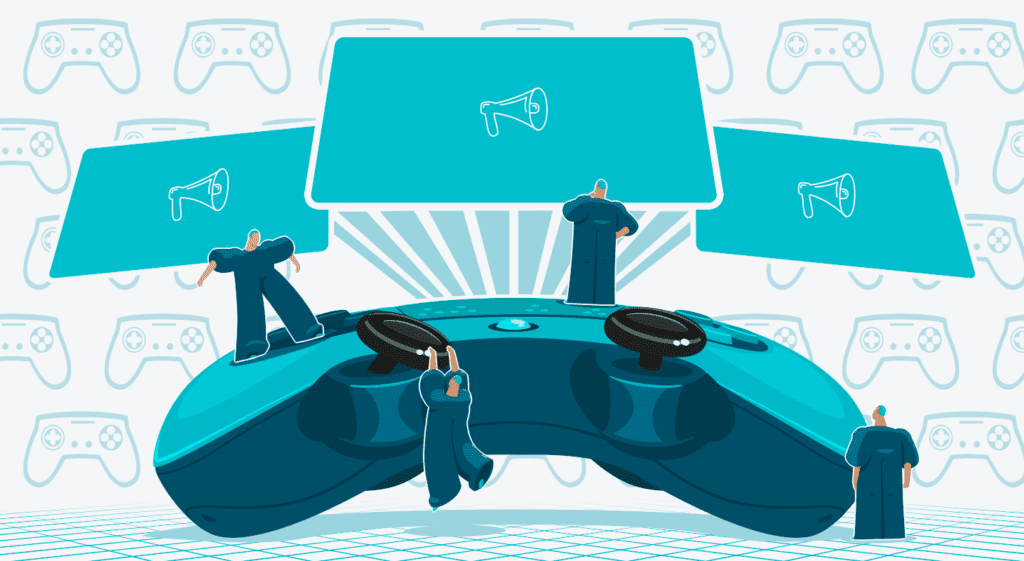The Ultimate Guide to Game Monetization Models
Game monetization includes strategies developers and publishers use to generate revenue from their games, whether through ads, in-app purchases, subscriptions, or pay-to-download models.
Why does this matter? Well, without a solid monetization plan, even the most popular games wouldn’t be able to continue providing updates, new content, or even stay operational. For publishers and developers, choosing the right monetization model is crucial–it’s about finding that spot where the game remains profitable while keeping players happy and engaged.
In this article, we’ll dive into the different types of game monetization models and how they offer value to both players and developers.

In-Game Advertising–The Best Advertising Model for Game Developers and Publishers?
In-game advertising (IGA) means that ads are integrated into the gameplay experience, allowing game developers to earn revenue by displaying ads to players. IGA allows developers to monetize free-to-play games, enabling them to offer the game for free while earning revenue from ads.
It’s a way to reach a large audience of players who might not make in-app purchases, making it a valuable tool for developers and advertisers looking to engage active users.
In-game ads tap into already engaged user bases who spend extended time within the app, making it a perfect place for advertisers to target users. The CTRs and engagement levels for in-game ads are often higher than in other forms of mobile advertising because they’re integrated seamlessly into the gameplay.
Types of Game Monetization Models
In-App Purchases (IAP)
In-app purchases (IAPs) have emerged as one of the most lucrative monetization models for mobile games, forming the backbone of the freemium game economy.
- The term “freemium” is derived from a blend of “free” and “premium,” reflecting the core concept of this model.
In a freemium game, players can download and play the game for free, enjoying basic features and content without any upfront payment. However, in-app purchases become available for those seeking an enhanced or accelerated in-game experience. These purchases allow players to access premium content, unlock exclusive features, or expedite their progress by spending real money.
Commonly referred to as microtransactions or in-game purchases, IAPs cover a broad range of paid content. The principle remains the same regardless of terminology–players exchange money for in-game benefits.
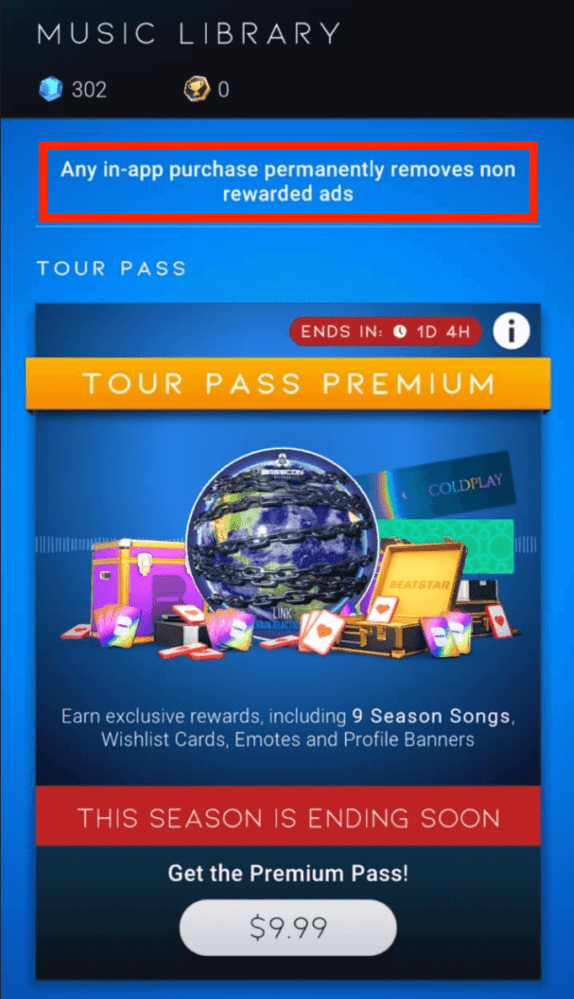
Types of in-app purchases
IAPs can take many forms, and the variety depends heavily on the type of game. Examples include:
- Consumables. Items that are purchased and used, such as extra lives, in-game currency (coins, gems), health potions, or energy boosters.
- Non-consumables. Permanent unlocks, like new characters, skins, levels, or game modes. These provide lasting value and can significantly enhance the player’s experience.
- Subscriptions. Recurring payments that grant players regular access to exclusive content, such as VIP features or monthly bonuses (we’ll dive into these later).
- Cosmetic upgrades. Items that don’t affect gameplay but allow for customization, like character skins, weapon designs, or outfits.
Crafting an effective in-app purchase strategy
The success of IAPs largely depends on understanding your players’ needs and the genre of your game. A thoughtful approach to IAP design ensures that purchases enhance gameplay rather than disrupt or unbalance it.
Progression vs. content
If your players are motivated by rapid progression (as in strategy or puzzle games), you should offer items that help them advance more quickly (e.g., extra moves, boosts, or fast-track options to skip levels.)
On the other hand, if your game is more story-driven or exploration-based (like RPGs or open-world games), players might be more inclined to purchase extra content, new storylines, or character upgrades.
Balance is key
IAPs can significantly boost revenue, but over-reliance on them (particularly if they’re essential to game progress) can lead to frustration and the perception of a “pay-to-win” system. This might alienate players who prefer to play for rewards or without spending money.
Incentivizing purchases
Incentives, such as limited-time offers, bundles, or exclusive items, can encourage players to purchase.
For example, offering rare or powerful items at a discounted rate or creating daily deals that provide extra value for a short period can drive engagement and sales.
Psychology of scarcity and urgency
Many successful games employ timed offers, flash sales, or exclusive limited-edition items to leverage the psychological principle of scarcity. These techniques can increase the perceived value of in-game purchases and motivate players to buy quickly before the offer expires.
Avoid Pitfalls in IAP Design
While IAPs can enhance player experience, poorly executed strategies can backfire:
- Paywalls. Be cautious about implementing paywalls that force players to spend money to continue playing. This can lead to player churn, especially if users feel compelled to pay to progress.
- Overpricing. Pricing your items too high can turn away casual players or make purchases feel unaffordable. Consider offering items at various prices to appeal to low and high-spending players.
- Transparency. Ensure players know exactly what they are purchasing. Misleading purchases, such as loot boxes that don’t disclose odds or contents, can lead to dissatisfaction and harm your game’s reputation.
Advertising-based mobile game monetization
In-app ads are one of the most widely used methods to monetize mobile games. This model allows game developers to generate revenue by displaying ads to users, typically in exchange for providing the game’s content and features for free.
In most cases, users are required to watch ads during gameplay, which can often promote other mobile games or non-gaming apps, like shopping or utility apps.
There are three key parties involved in this ad-serving process:
- Users (players)–those who engage with the game and view the ads.
- Publishers–the game developers or studios that integrate and display ads within their game.
- Advertisers–businesses or other developers who want to promote their products through in-game ads.
This system creates a mutually beneficial arrangement.
Users enjoy free access to games, with the trade-off of ad exposure. Publishers monetize their user base, earning revenue every time an ad is served or clicked. Advertisers gain exposure to a highly engaged audience, potentially driving app installs or sales.
However, ad-based monetization requires careful balancing.
Although users may accept ads as part of the free-to-play experience, their tolerance has limits. Users don’t enjoy ads–they simply tolerate them for free content. Too many ads, intrusive formats, or poorly timed interruptions can lead to frustration, negative reviews, or lower engagement.
In-app ad types
Here are the 5 most common in-app advertising ad types used for mobile games:
- Rewarded video ads are popular because they provide value to both users and developers. Players voluntarily watch an ad in exchange for in-game rewards, like extra lives or currency, which increases engagement.
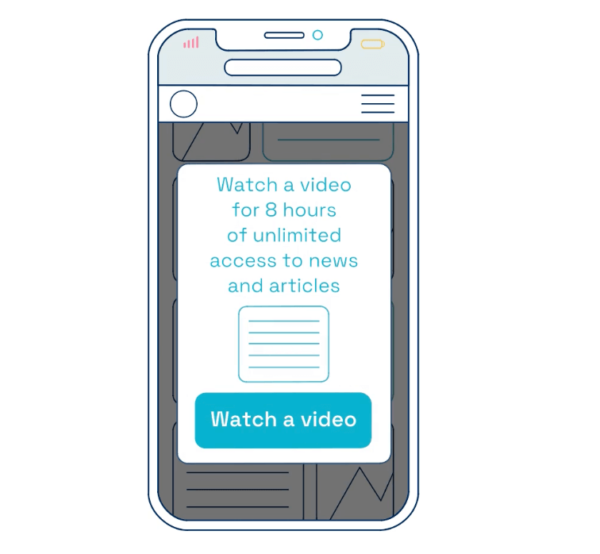
- Banner ads are less intrusive and display at the top or bottom of the screen during gameplay. While less disruptive, they tend to generate lower revenue than other ad formats.
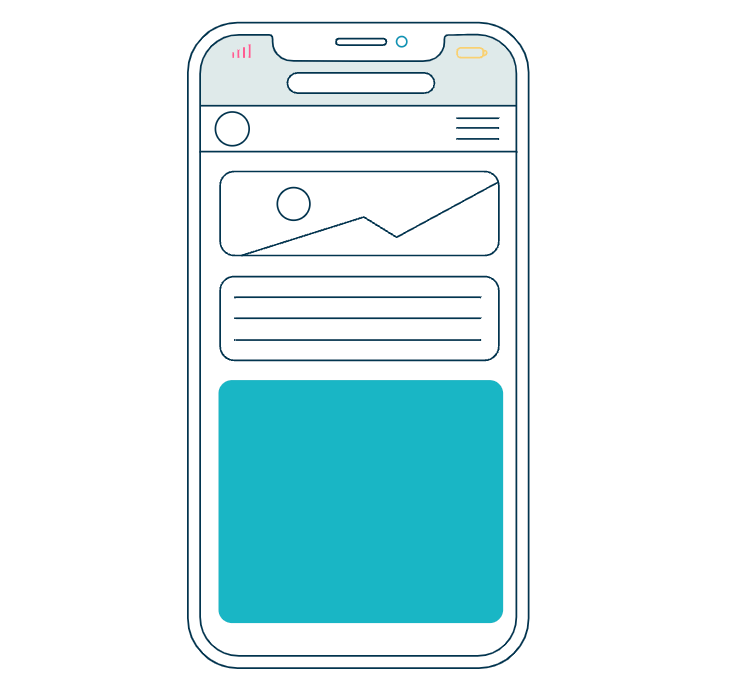
- Native ads blend seamlessly into the game’s interface, making them less noticeable while promoting content. These tend to offer a subtler user experience.
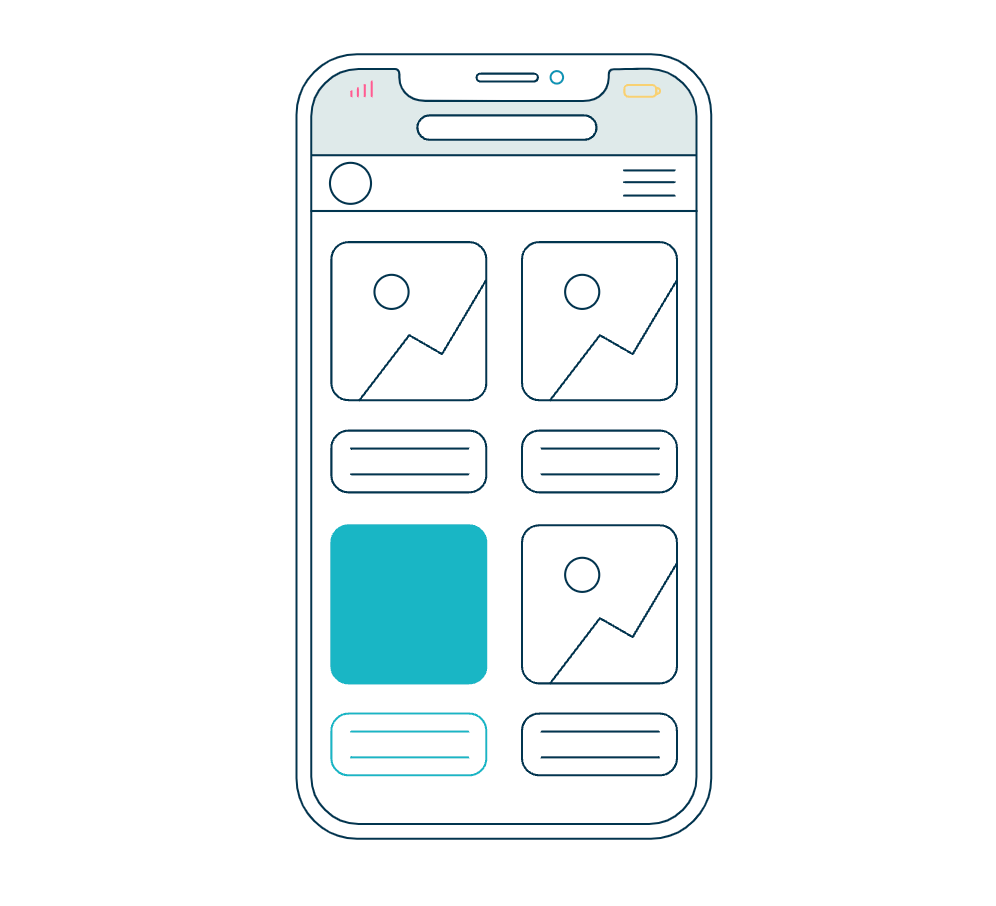
- Interstitials are full-screen ads that appear at natural pauses in gameplay (e.g., between levels). These can be effective but may annoy users if shown too frequently.
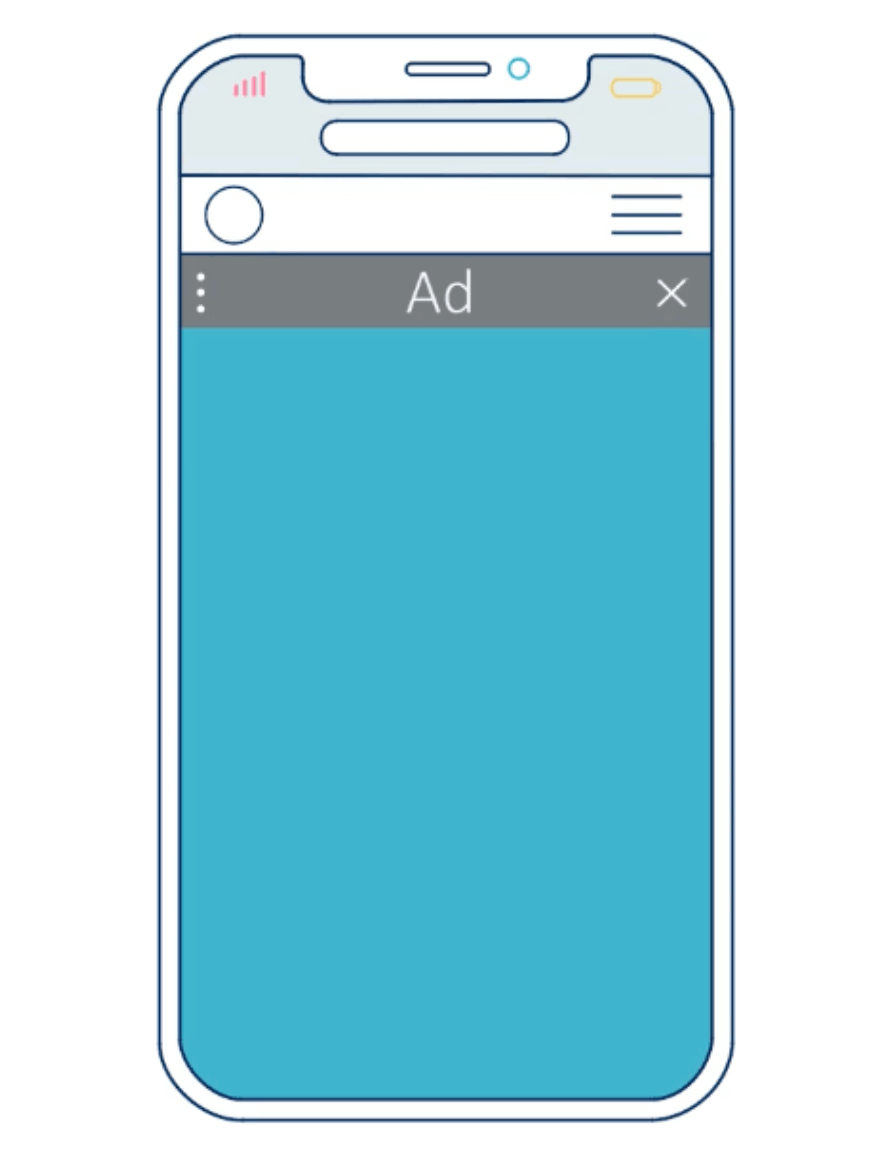
- Playable ads are interactive ads that allow users to try a demo of another game. These have high engagement rates and can result in higher conversions for advertisers.
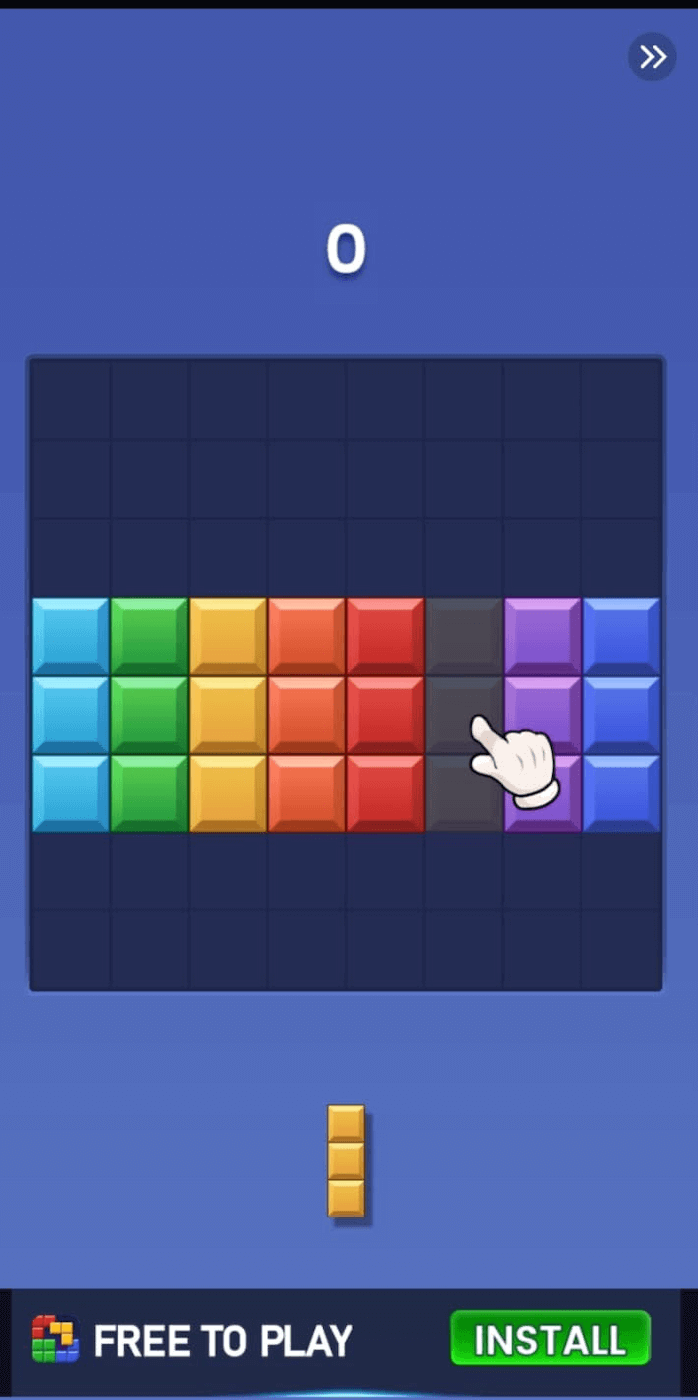
Challenges of ad-based monetization
Despite the potential revenue from in-app ads, game developers must balance monetization and user satisfaction. Over-monetization can result in user churn, where players abandon the game because of frustration.
On the other hand, showing too few ads may limit revenue potential. To maximize the effectiveness of ad-based monetization, consider the following strategies:
- Frequency control. Limit the number of ads shown per session to maintain a positive user experience. Avoid showing ads during critical gameplay moments, like intense battles or time-sensitive puzzles.
- Ad personalization. Showing relevant ads can make them feel less disruptive. Integrating machine learning algorithms to match ads to user preferences can improve user engagement and performance.
- Testing and optimization. Continuously testing different ad placements, formats, and frequencies can help find the optimal balance for user retention and monetization.
Subscription-based monetization
When you hear the word “subscription,” services like Netflix likely come to mind. The concept is simple: users pay a recurring fee to access a wide range of content. In mobile games, subscriptions work similarly, but players pay for special in-game benefits instead of video content.
While subscriptions are technically an in-app purchase, their growing popularity and distinct mechanics have elevated them into a separate and standalone monetization model.
Mobile game subscriptions grant players access to premium content or features for a set period.
These can include exclusive items, bonuses, or an ad-free experience. Once a player subscribes, they need to pay the subscription fee regularly (whether weekly, bi-weekly, monthly, etc.) to maintain access to those benefits. Essentially, players are renting access to additional in-game value for as long as they continue paying.
Types of Game Subscription Models
Developers have the flexibility to structure subscription plans in various ways:
- Weekly subscriptions–players pay a small weekly fee to receive short-term benefits, including daily rewards, faster progress, or bonus in-game currency.
- Monthly subscriptions–a more common and popular model, players pay a recurring monthly fee for continuous access to premium features.
- Seasonal or event-based subscriptions–players subscribe for limited-time content tied to specific events, seasons, or expansions in some games.
Note: Subscriptions often complement existing monetization strategies rather than replace them. For example, a game that primarily earns revenue through IAPs or ads might offer a subscription model that provides additional perks like exclusive items, faster progression, or an ad-free experience.
Maximizing subscription value for players
The subscription model best suits games with an engaged and loyal player base. Subscribing to a game requires more commitment than one-time purchases, as players agree to a recurring payment. In return for this commitment, they expect a steady stream of value–exclusive content, faster progression, or ongoing rewards.
The subscription model works particularly well for live service games. Those that are regularly updated with new content, challenges, or events. These games keep players returning and offer more reasons to maintain their subscriptions over time.
To encourage players to subscribe, developers must ensure that the benefits are worth the investment. Subscriptions should offer significant value beyond what free or one-time-paying players experience.
Here are four examples of enticing subscription benefits:
- VIP perks–access to exclusive items, characters, or skins that aren’t available through other means.
- Ad-free experience–removing all ads from the gameplay, allowing uninterrupted play.
- Daily or weekly rewards–regularly giving players consistent rewards, like in-game currency, items, or boosters.
- Priority support–offering subscribers enhanced customer service with faster response times or additional game support.
Subscription pitfalls to avoid
While subscriptions can provide a consistent revenue stream, they come with potential challenges:
Overpricing. Players may be reluctant to commit if the subscription cost is too high relative to the perceived value. Developers should carefully test different price points and package options to find what resonates with their audience.
Lack of long-term value. If players don’t feel they’re getting enough value from their subscription over time, they may cancel it. Maintaining a steady flow of exclusive content or events can help keep subscriptions appealing.
Forcing subscriptions. Avoid making subscriptions feel like the only path to enjoying the game. Games that seem to require a subscription to be playable or competitive may drive users away, especially if they lean too heavily into the “pay-to-win” territory.
Pay-to-download
The pay-to-download (P2D) model involves charging players upfront to access a game, which can be advantageous in specific scenarios. This model works best for high-quality, content-rich games that offer a premium experience. These games often have strong brand recognition or a dedicated fanbase willing to pay for exclusive content or an ad-free experience.
The P2D model is ideal for niche or story-driven games where players value immersive, uninterrupted gameplay. Developers can ensure they are compensated for the game development upfront, which can help reduce reliance on in-game purchases or ads later on.
Classic examples include indie games, puzzle games, or adventure RPGs with a specific target audience that appreciates curated content.
Challenges with pay-to-download games
The free-to-play approach largely dominates the mobile gaming market, where players are accustomed to downloading games for free. This makes it difficult for P2D games to attract new users, especially when numerous high-quality games are available at no upfront cost.
Many developers opt for free-to-play alternatives because they reduce the barrier to entry and allow a broader audience to try the game before committing financially. In F2P models, app owners can monetize through the aforementioned models, like in-app purchases, ads, or subscriptions.
Hybrid monetization models
Hybrid monetization involves blending various revenue strategies, such as in-app purchases, in-app ads, and subscriptions. Rather than relying on a single monetization method, you can leverage the strengths of each model to capture more value from different players.
By combining these models, you cater to a broader audience:
- In-app purchases target paying players willing to spend money to enhance their experience.
- In-app ads allow you to monetize non-paying players, who might not spend money but still generate value by viewing ads.
- Subscriptions cater to highly engaged players, offering them ongoing benefits and premium content in exchange for a recurring payment.
Why use a hybrid monetization model?
Every monetization model has its strengths but also limitations. Combining different models helps you tap into multiple revenue streams and reduces reliance on any single source. This increases revenue potential and allows you to provide a tailored experience for different types of players.
So, why does it work?
First, you cater to a diverse player base. Not every player will pay for in-app purchases or subscriptions. Some may be more tolerant of ads than others. By adopting a hybrid approach, you can monetize paying and non-paying players in ways that suit their behavior.
Second, hybrid monetization helps you capture more value from your user base. Paying players can purchase premium content or subscribe, while non-payers generate ad revenue–ensuring that almost every player contributes to the game’s profitability.
Last but not least, you can experiment with and adjust the weight of each model based on user behavior, ensuring that the game’s monetization strategy remains balanced and sustainable.
Potential challenges of hybrid monetization
While hybrid monetization offers many benefits, there are some challenges that developers need to manage carefully:
- Balancing models. It’s important not to overwhelm players with too many monetization tactics simultaneously. If not balanced properly, players may feel the game is overly commercialized or “pay-to-win,” leading to dissatisfaction or churn.
- Ad saturation. Relying heavily on ads can frustrate players, especially if they feel inundated with too many ads. Ensure ads are well-timed and offer meaningful rewards, like rewarded video ads, to avoid negative player experiences.
- Pay-to-win perception. Offering too many in-app purchases or heavily promoting premium content can create an unfair advantage for paying players. Designing the monetization system is crucial so that non-paying players can still enjoy the game without feeling disadvantaged.
Monetization Models by Platform
Mobile Game Monetization
Mobile game monetization helps to generate revenue from mobile games through ads, in-app purchases, or subscriptions. It’s essential for keeping games free or low-cost while sustaining development.
Unique Challenges in Mobile Monetization
1. Device constraints
Mobile devices, especially older models, are often less powerful than PCs or consoles. Heavy graphics, high CPU usage, or frequent ads could cause performance issues, like lagging or crashes. Additionally, mobile games must account for battery life and data consumption.
- For example, games with heavy ad integration can drain a device’s battery quickly or use excessive mobile data, which can frustrate users and lead to uninstalls.
2. User behavior
Mobile players generally have shorter and more frequent play sessions than console or PC gamers.
Casual games, in particular, need to engage users quickly, making strategies like rewarded video ads and freemium models highly effective.
- For example, rewarded video ads are popular in mobile games because they allow players to watch an ad in exchange for an in-game reward, creating a mutually beneficial experience.
Additionally, mobile gamers often prefer free-to-play models, which require developers to balance offering free content while driving engagement with IAPs or ads.
3. Shorter play sessions
The mobile gaming experience typically involves brief, fragmented play sessions, as users engage during commutes, breaks, or waiting periods. This shorter engagement window requires developers to present monetization opportunities in a non-intrusive, user-friendly way.
Aggressive ad placements or forcing players to make purchases too soon can lead to frustration and churn. On the other hand, well-timed IAP offers or incentivized ads can work well during breaks between game levels or tasks.
App store optimization
To monetize effectively, mobile games must first be discoverable. This is where app store optimization (ASO) comes into play.
ASO involves optimizing a game’s metadata–such as its title, keywords, description, and visuals–to improve visibility in search results and increase download rates. High download rates drive more players into the game’s monetization funnel.
Effective ASO principles include:
- Optimizing keywords relevant to the game’s genre and target audience.
- Using high-quality app icons, screenshots, and trailers that emphasize gameplay and the core value proposition.
- Encouraging positive reviews and ratings to boost rankings in app stores.
iOS vs. Android Monetization Strategies
Both iOS and Android platforms have distinct user demographics and monetization potentials.
- iOS users, for instance, are generally known to spend more on IAPs than Android users.
Thus, developers may focus more on premium subscriptions, IAPs, and higher-value offerings on iOS due to the higher purchasing power of its users. Optimizing for Apple Arcade or in-game purchases while minimizing ads can help create a polished and premium feel.
- Android users represent a larger global audience, making ad-based revenue models more favorable.
On Android, ad-based models with rewarded ads, banner ads, or interstitial ads tend to generate more revenue. Android’s more diverse user base across various income levels and regions makes it important for developers to integrate ads more prominently while still offering optional IAPs.
Note: Both platforms take a significant cut from in-app purchases (typically 30%), so developers must strategize to balance profitability.
Console and PC Game Monetization
While mobile games heavily rely on free-to-play models with in-app purchases (IAPs) and ads, console and PC games traditionally utilize more premium models. However, free-to-play models are also growing in popularity on both platforms.
How console and PC games monetize through expansions, DLCs, and in-game purchases?
Expansions are integral to the longevity of many PC and console games, particularly MMOs (massively multiplayer online games) like World of Warcraft. These expansions offer significant new content that often alters the gameplay experience. They are priced as major upgrades, sometimes comparable to the cost of the base game.
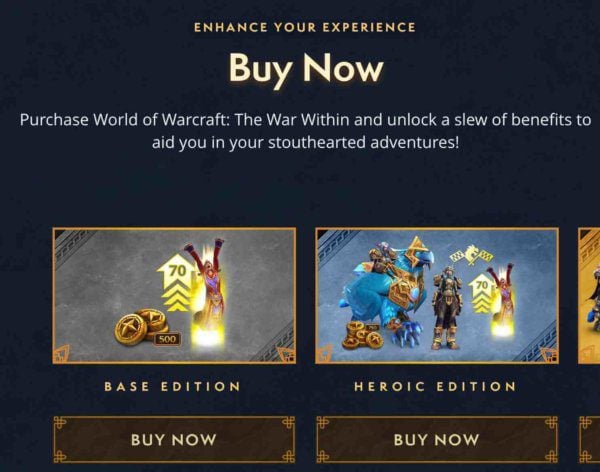
DLCs (downloadable content) are smaller, more incremental content additions that can include new maps, characters, or missions. Players are encouraged to purchase DLCs to enhance their game experience, such as new campaigns in The Witcher 3.
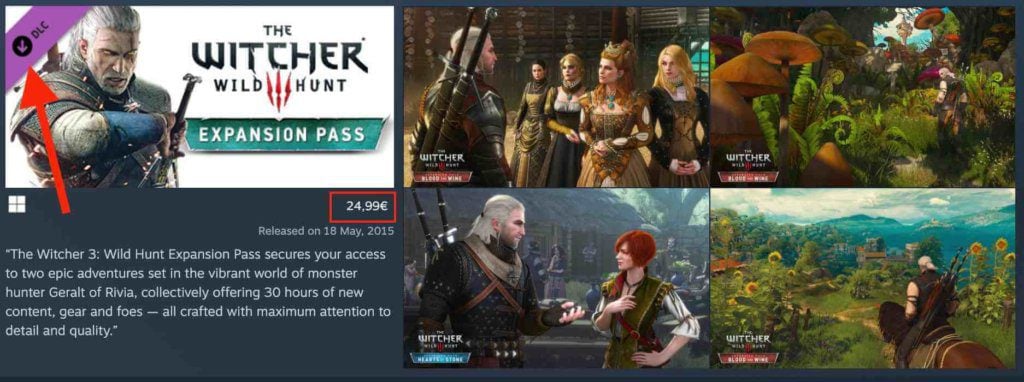
Battle passes have become another staple of monetization in free-to-play games.
A battle pass offers tiered rewards unlocked through gameplay progression or direct purchase. Players purchase the battle pass to access exclusive content over a season, which helps the developer sustain revenue without forcing all players to pay upfront.
Additionally, subscription models are becoming more popular, e.g., services like Xbox Game Pass and PlayStation Plus offer access to a wide range of games for a subscription fee. These platforms are excellent for monetizing older games or indie titles, increasing their exposure and long-term profitability.
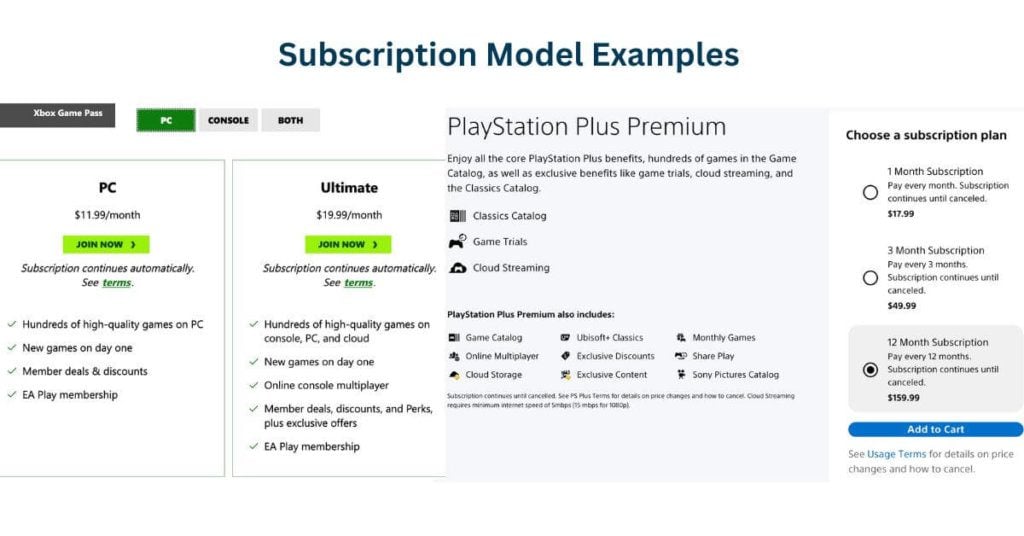
Differences Between Console, PC, and Mobile Monetization Models
| Aspect | Console games | PC games | Mobile games |
| Primary monetization model | Upfront purchases, DLCs, expansions, in-game purchases | Upfront purchases, DLCs, expansions, in-game purchases | Free-to-play with in-app purchases (IAPs), ads |
| Player expectations | Higher-quality, polished, complete experience for a fixed price | Similar to console, but with more flexibility for indie and smaller games | Free-to-play with optional purchases for enhancement |
| In-game purchases | Common for cosmetics or season passes in online multiplayer games | Microtransactions, especially in live service and multiplayer games | Frequent use of microtransactions for cosmetic items, in-game currency, or power-ups |
| Ads | Rare, generally no ads in AAA games | Rare, generally no ads in premium games | Common |
| Free-to-play model | Increasingly common in online multiplayer titles (e.g., Fortnite, Apex Legends) | Popular in some genres (e.g., MMOs, multiplayer shooters) | Most common model, with optional microtransactions and ads |
| Player base | Core, dedicated players who invest in long play sessions | Diverse, with both hardcore and casual players, depending on genre | Casual players with shorter, frequent play sessions |
Cross-Platform Monetization
Cross-platform monetization generates revenue from games across multiple platforms, such as consoles, PCs, and mobile devices.
How Cross-Platform Games Monetize Differently?
Players on different platforms have distinct expectations when it comes to game monetization.
For example, mobile gamers are typically more familiar with free-to-play models that use in-app purchases and ads. In contrast, console and PC gamers often expect a premium experience with paid downloads or one-time purchases.
Games like Fortnite exemplify this dynamic. On mobile, they offer free-to-play experiences with optional cosmetic purchases, while on consoles and PCs, they follow similar models but have added subscription services, DLCs, and expansions.
Cross-platform games must employ a synchronized system for purchases and in-game progress to accommodate these expectations. Players who make purchases on one platform expect access to those items or features when switching to another platform.
Challenges and opportunities of monetizing across multiple platforms
One of the biggest challenges of cross-platform monetization is ensuring technical integration between platforms. Each platform has its own infrastructure, user interface, and payment system. For example, Apple’s App Store, Google Play, and Steam have unique requirements for handling payments and subscriptions.
Ensuring that a player’s in-game purchases, such as skins or virtual currency, are accessible on a mobile device and console is complex and requires unified development practices.
Another challenge is dealing with monetization restrictions. Certain platforms have strict guidelines on how developers can promote cross-platform purchases. For instance, Apple prohibits apps from directing users to external payment links, limiting developers’ ability to guide players toward cross-platform transactions.
Despite these challenges, cross-platform monetization allows developers to tap into a larger, more diverse audience. By making a game available on multiple platforms, they can reach casual mobile players and dedicated console or PC gamers.
Cross-platform games also boost user engagement. Players can seamlessly switch between devices, continuing their progress on the go or playing at home. Games offering cross-platform play, such as Minecraft, demonstrate how this flexibility leads to deeper engagement and wider monetization possibilities.
Developing a Game Monetization Strategy
Understanding your target audience
The demographics of players, especially their geographic location and spending power, can significantly influence the best monetization model to use.
For example, players in countries with lower average incomes tend to respond more favorably to ad-based models, especially rewarded videos, as seen in games like Angry Birds.
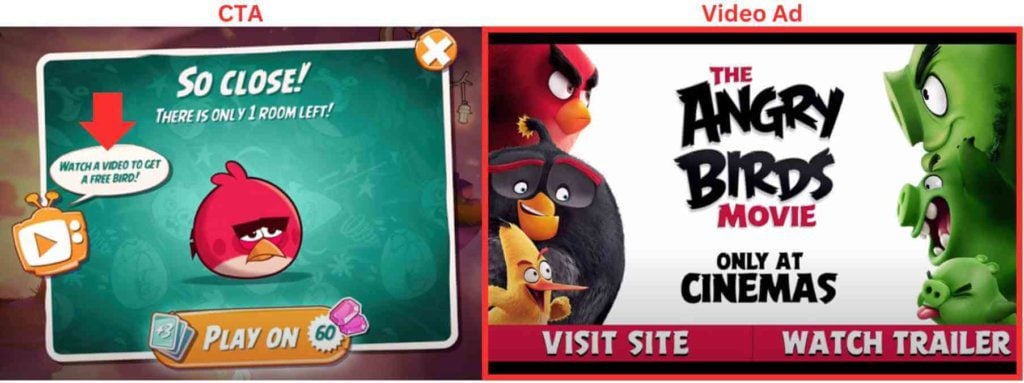
In-app purchases are less frequent for these players, but they are willing to watch ads in exchange for in-game rewards. The key is to use ads to enhance the gameplay experience, such as offering an ad-view option to continue playing after losing.
In wealthier countries, players are generally more willing to spend on in-app purchases and subscriptions. Games like Pokémon GO tap into this market by offering premium content and features that enhance the game, such as character skins, additional content, or rare in-game items.
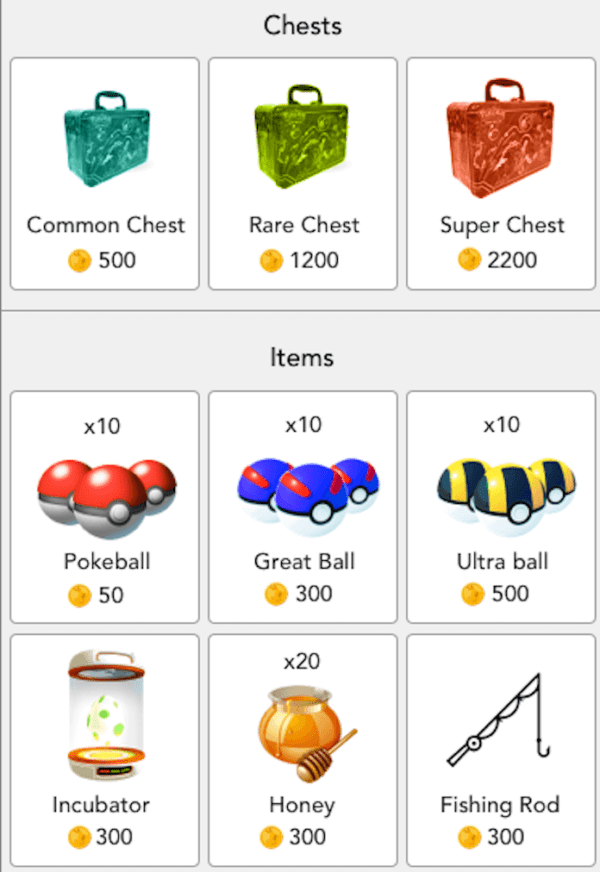
Players in these markets expect higher quality and are often willing to pay for premium experiences with convenience or exclusivity.
Retention vs. monetization
While monetization strategies like IAPs or ads can generate significant revenue, overly aggressive tactics can frustrate players and lead to churn–the loss of users. Effective monetization requires finding the spot where revenue generation doesn’t undermine the player experience.
For example, too many ads or highly-priced in-game items can cause players to leave the game, reducing retention. To avoid this, developers must ensure that monetization methods are non-intrusive and offer real value, such as optional cosmetic items or balanced progression boosts.
The key is to retain users by making the game enjoyable and engaging while offering monetization options that enhance, rather than disrupt, the overall experience..
A/B testing monetization models
By testing different versions of monetization models with segmented audiences, developers can gather data-driven insights on what works best without compromising the entire user base. This process involves creating two versions of a specific monetization feature–in-app purchase pricing, ad frequency, or subscription offers–and comparing user engagement, retention rates, and revenue between the groups.
For example, developers might test different price points for in-app purchases in two user groups to see which leads to higher conversion rates. Alternatively, A/B testing can determine the ideal ad frequency that maximizes ad revenue without pushing users to abandon the game due to frustration.
A/B testing also helps reduce risk.
Instead of overhauling the entire monetization system based on assumptions, developers can introduce small, controlled changes and measure their impact based on real data.
Setting fair pricing for in-app purchases and subscriptions
When setting pricing, mobile game developers must balance maximizing revenue and ensuring player satisfaction. The key to a successful pricing strategy is affordability while maintaining profitability.
If prices are too high, players may feel alienated or view the game as overly commercialized. On the other hand, prices that are too low may not generate sufficient revenue to sustain development and operations.
Pricing strategies that maximize revenue without alienating players
Here are 5 pricing strategies that can help you to maximize revenue without compromising user satisfaction:
1. Tiered pricing
Offering a range of price points is crucial to cater to different segments of the player base. For example, some players are willing to pay for premium content or cosmetic upgrades, while others might only be interested in small, affordable purchases.
Developers can appeal to casual spenders and players who spend significantly more by introducing low-cost microtransactions alongside higher-value bundles or subscription tiers.
2. Localized pricing
Adjusting prices based on the economic conditions of different regions is an important strategy.
Players in emerging markets may not be able to afford the same prices as those in high-income regions, so tailoring prices to local conditions can increase affordability and conversion rates. Mobile platforms like the App Store and Google Play often allow developers to implement region-specific pricing strategies.
3. Value perception
Players need to feel that they’re getting value for their money. Offering clear benefits such as faster progression, exclusive content, or a more enjoyable experience can justify the price.
Limited-time offers, discounts on bundles, or exclusive skins and characters can enhance the perceived value of IAPs or subscriptions, encouraging purchases without the risk of alienating users.
4. A freemium model with non-essential purchases
In the freemium model, the core game is free, and purchases are designed to enhance, not define the gameplay experience. This means offering in-app purchases and non-essential subscriptions for basic gameplay, such as cosmetics or convenience items, ensures that non-paying users can still enjoy the game while paying users get additional perks.
5. Psychological pricing
Subtle techniques like setting prices at $4.99 instead of $5.00 can influence purchasing behavior. The perception of value can be enhanced by slightly lowering prices below a round figure, which makes the offer seem more affordable and attractive.
Monetization Best Practices for Different Game Types
Understanding the type of game you’re developing is foundational to determining the most suitable monetization approach. Different genres naturally align with different strategies.
Casual games
Games like Candy Crush Saga are designed for short, frequent play sessions and attract a broad audience.
Ad-based monetization works well in these games because players are accustomed to ads in exchange for free content. Players in casual games typically don’t mind viewing an ad in exchange for extra lives, coins, or level skips.
Mid-core/hard-core games
Games like Fortnite attract dedicated, long-term players who are deeply invested in the game world and its mechanics. These games benefit from in-app purchases and subscriptions.
Players in these genres are often willing to spend real money on power-ups, cosmetic items, or exclusive content to enhance their gaming experience. Subscriptions can offer perks like an ad-free experience, faster progression, or access to special events.
Puzzle and educational games
Games like Duolingo blend monetization models effectively.
While players expect an ad-based experience in educational or casual puzzle games, they are also open to IAPs for premium content or removing ads. This hybrid approach balances user experience with profitability by offering free and premium experiences

Legal and Ethical Considerations in Game Monetization
Player privacy and data collection
Monetizing games comes with several legal and ethical responsibilities. Game developers must follow relevant laws and uphold ethical practices to avoid potential lawsuits, damage to their reputation, and loss of player trust.
Game developers must ensure that they comply with international privacy laws such as the GDPR in Europe or the CCPA in the U.S. These regulations enforce strict guidelines around collecting, storing, and using player data. Developers must be transparent about what data they collect and how it is used, giving players control over their personal information. Failure to comply can lead to significant fines, legal consequences, and loss of player trust.
Moreover, data collected from players, such as in-game behavior, purchase history, and interactions, should only be used to improve the player experience and monetization strategies.
Avoiding Predatory Practices in Monetization
Predatory monetization refers to strategies that exploit players psychologically or financially, such as pay-to-win models or excessive use of loot boxes that resemble gambling. There have been rising concerns about the psychological manipulation some games employ to encourage players to spend, leading to lawsuits and a push for regulation.
Pay-to-win models, where players can buy advantages over others, are one of the most criticized aspects of game monetization. These practices are seen as unfair, especially in competitive multiplayer games.
For example, loot boxes, which offer randomized in-game rewards, have been compared to gambling because they encourage players to spend money for a chance to win a valuable item.
Some countries have even banned loot boxes or heavily regulated their use. Developers should aim to create monetization strategies that enhance the gameplay experience without manipulating players into overspending.
Ethical monetization means balancing revenue generation with creating a positive and fun experience for players. For instance, games should avoid making it impossible to progress without spending money, as this can alienate players and reduce the game’s overall enjoyment.

Conclusion
Game monetization models are essential for developers and publishers to generate revenue while offering free or paid gaming experiences. These models include in-app purchases, advertising, subscriptions, and pay-to-download options–each caters to different types of games and player preferences.
The right strategy allows publishers to tap into diverse revenue streams, reach both paying and non-paying users, and customize monetization to the game’s audience and genre. Successful monetization balances player retention with revenue generation, ensuring the game and its user base thrive over time.
FAQs
What are game monetization models?
Game monetization models are strategies used by developers to generate revenue from their games, including in-app purchases, ads, subscriptions, and pay-to-download options.
How do I choose the right monetization model for my game?
Choose based on your game’s genre, target audience, and player engagement level; casual games might suit ads, while more immersive games could benefit from in-app purchases or subscriptions.
What is the difference between in-app purchases and ads in mobile games?
In-app purchases allow players to buy virtual goods or enhancements, while ads generate revenue through third-party advertisements shown to players.
What are the best practices for balancing ads and player retention?
Limit the frequency and intrusiveness of ads and use rewarding ad formats like incentivized video ads to maintain player engagement without causing frustration.
How do I optimize monetization for mobile games?
Use A/B testing, adjust pricing for different regions, and balance monetization strategies with player satisfaction to maximize revenue while keeping users engaged.
What legal considerations should I be aware of in-game monetization?
Be aware of regulations regarding data privacy (GDPR, COPPA), ensure transparency in pricing, and avoid deceptive or predatory practices that could lead to legal disputes.
What is the difference between freemium and premium subscriptions?
Freemium offers basic gameplay for free with optional paid upgrades, while premium subscriptions offer exclusive content or features for a recurring fee.
How do I measure the success of my monetization strategy?
Track key performance indicators (KPIs) like average revenue per user (ARPU), lifetime value (LTV), conversion rates, and player retention metrics.
How can indie developers effectively monetize their games?
Indie developers can use freemium models, in-app purchases, and ads, while leveraging user engagement strategies like community building and social sharing for organic growth.
What trends will shape the future of game monetization?
Trends include cross-platform monetization, blockchain integration (NFTs), and the growing importance of subscription services and ad-free experiences in mobile and console gaming.
